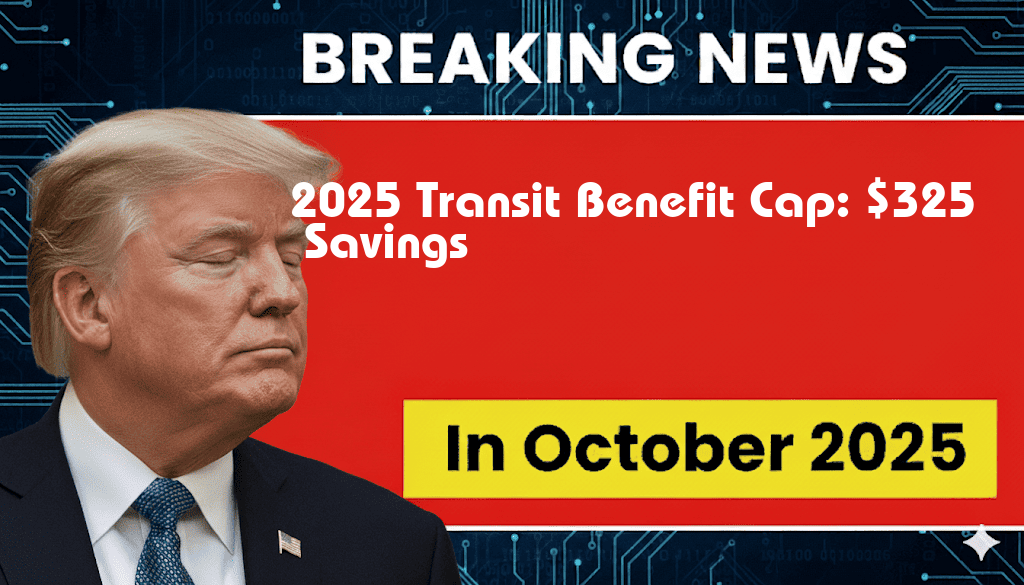

The Internal Revenue Service (IRS) has announced the 2025 transit benefit cap will be set at $325 per month, increasing the financial relief available to commuters using public transportation. This change, effective January 1, 2025, aligns with the IRS’s annual adjustment of transportation fringe benefits, which are designed to encourage the use of mass transit and alleviate the burden of commuting costs. The increase of $25 from the previous year is expected to provide significant savings for employees relying on public transit systems. By utilizing these benefits, commuters can save on their overall transportation expenses while promoting environmentally friendly travel options.
Understanding Transit Benefits
Transit benefits are a crucial component of employee compensation packages, particularly for those who commute in urban environments. These benefits allow employers to subsidize public transportation costs, making it more affordable for workers to get to and from their jobs. The increased cap for 2025 is a response to rising transportation costs and aims to encourage more individuals to opt for public transit over personal vehicles.
Key Details of the 2025 Transit Benefit Cap
| Year | Monthly Cap |
|---|---|
| 2023 | $300 |
| 2024 | $300 |
| 2025 | $325 |
Potential Savings for Commuters
For employees who commute daily, the potential savings from utilizing the transit benefit can be substantial. Below are some scenarios illustrating how the increased cap can impact monthly budgets:
- If an employee spends $150 on public transit each month, they will be able to cover their full costs under the new cap.
- An employee commuting via subway or bus costing $250 monthly can expect to save $75, which can be redirected to other expenses.
- For those spending close to the cap, say $300, the new limit allows for a full reimbursement, enhancing financial flexibility.
Impact on Employers
Employers who provide transit benefits can expect to see a positive impact on employee satisfaction and retention. By implementing these benefits, companies can foster a more sustainable and engaged workforce. Furthermore, offering transit benefits can reduce the company’s taxable income, as these expenses are often tax-deductible. In light of these factors, employers are encouraged to evaluate their benefits packages to include transit subsidies.
How to Access Transit Benefits
Employees interested in accessing transit benefits should consult with their HR departments or payroll administrators for specific details on how to enroll. Generally, the process involves:
- Choosing a transit provider that aligns with your commuting needs.
- Completing the necessary forms to set up payroll deductions or reimbursements.
- Staying informed about changes in transit costs and benefits caps as they are updated by the IRS.
Looking Ahead
The decision to raise the transit benefit cap reflects ongoing efforts to address the challenges of commuting in urban settings. As cities continue to grow, promoting public transportation through financial incentives is becoming increasingly important. With the new cap set for 2025, commuters can expect enhanced support for their transit needs.
Resources for Further Information
For those looking for more information on transit benefits, the following resources may be helpful:
- IRS Transit Benefits Overview
- Forbes on Transportation Fringe Benefits
- Wikipedia Entry on Transportation Fringe Benefits
Frequently Asked Questions
What is the new transit benefit cap for 2025?
The transit benefit cap for 2025 has been set at $325 per month, allowing employees to save on their commuting costs.
How can employees take advantage of the transit benefits?
Employees can take advantage of the transit benefits by participating in their employer’s benefit program, which allows them to use pre-tax dollars to cover eligible commuting expenses.
What types of transportation are covered under the transit benefit program?
The transit benefit program typically covers expenses related to public transportation such as buses, trains, and subways, as well as certain parking costs for those who carpool or drive.
Will the transit benefit cap increase in the future?
While the transit benefit cap is set for 2025 at $325, future adjustments may occur based on inflation or changes in federal regulations, so it is advisable to stay informed.
How much can employees potentially save with the transit benefit?
By utilizing the transit benefit, employees can save up to $325 per month on their commuting expenses, significantly lowering their taxable income and overall transportation costs.




